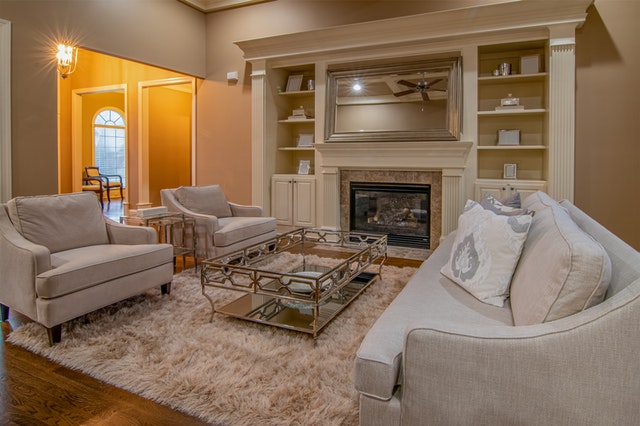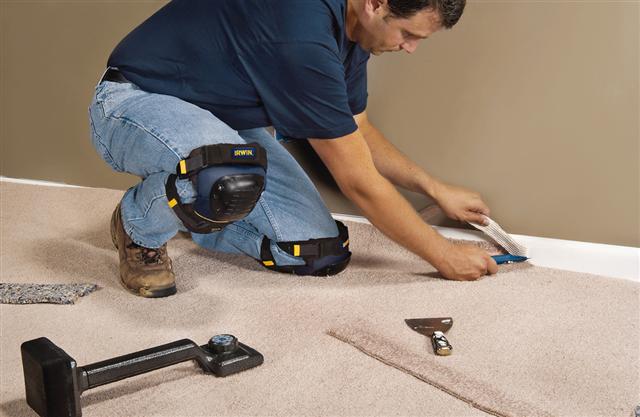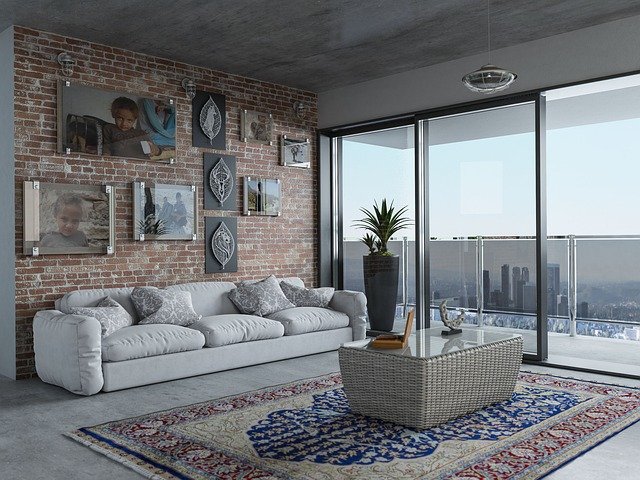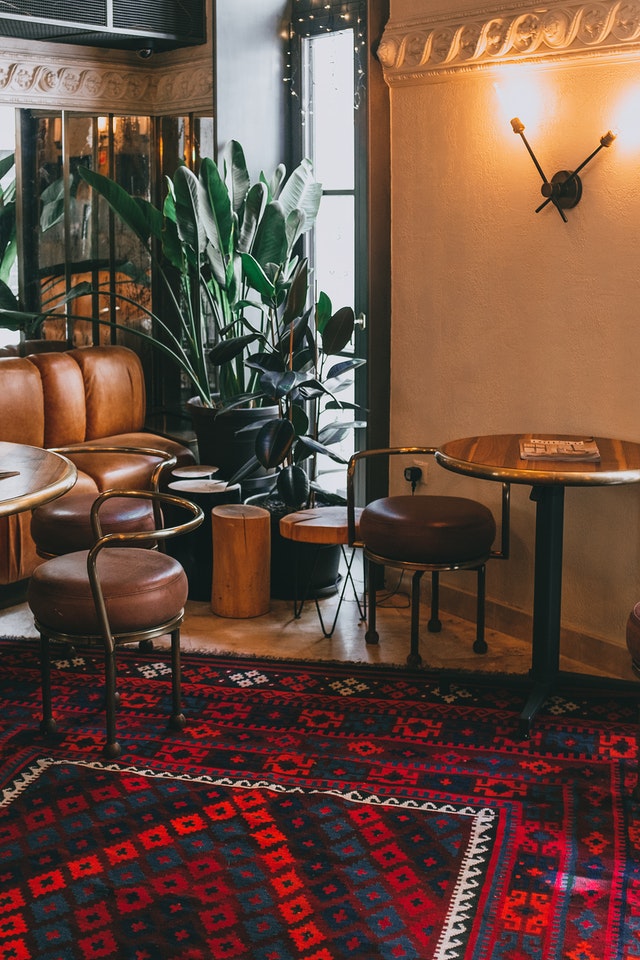You can tell pile direction by stroking it: Stroking against the pile direction will raise the nap. When you “look into” the pile, with the fibers leaning toward you, a carpet takes on its deepest hue. When you “look over” the pile, the carpet appears flatter and lighter in color. If possible, carpet should be installed with the pile leaning toward the main entrance to the room, presenting its fullest, richest appearance. To help hide the seam where two pieces of carpet are joined, the pile of at least one side should lean over the seam. In a doorway connecting two rooms, the pile from both sides may lean over the seam, but within a room the pile of every section of carpet must lean the same way or the pieces will show up as different hues.
Pile direction is one of several factors that must be taken into account when you are planning the layout of a carpet in a room and calculating how much to buy. Some others to remember are:
- Unless you have some carpet installation experience, you may be wise to begin in a small room requiring carpet with no seams.
- Run the longest seam in the room toward the major light source-usually the largest window. A seam running parallel to light rays is much less apparent than one running across them.
- Keep seams away from high traffic areas, such as between doors of a room. The foot traffic thus directed along the seam length may loosen it.
- A tool called a carpet tractor is useful when making seams. Available from some carpet equipment suppliers, it pulls the two edges together for a tight seam.
- The best way to determine how much carpet you will need is to make a scale drawing of the area to be carpeted on graph paper. Choose a scale that will keep the drawing a convenient size; equating each square of the graph paper to a square foot usually works well.
- Make separate measurements of the entire length of each wall and then the shorter distances between its various features, such as doorjambs. Double-check for error by making sure the sum of the parts is equal to the whole. Compare diagonal measurements and the distances between walls to see if the walls are skewed or bowed. Plot the walls, doors and windows on the graph paper.
- Include the areas where the carpet will extend into doorways or bays as part of the room’s overall dimensions; then add 3 inches to the length and the width of the floor for error. You may also have to add 1/2 inch for trimming each factory-cut edge; ask the carpet dealer for the manufacturer’s recommendations.
Now, bearing in mind the rules about pile direction and the location of seams, figure out how many running yards of carpet 12 feet wide you need to cover the room, keeping the seams and the amount of wasted carpet to a minimum. To do this, experiment with graph paper cut to represent a length of carpet 12 feet wide.
If the carpet is patterned, you must take into account the repeat-the distance from the point where a pattern begins to where it begins again-in order to be sure of matching the pattern along a seam. If your scheme involves matching the pattern only lengthwise across two original edges of the carpet, simply allow for a full extra repeat on one of the lengths, and you will be able to adjust it to match. Take your scale drawing to your carpet dealer to have your estimates checked. If the carpet will meet an adjoining surface other than carpet, buy the length of binder bar needed; install it.
Before starting, nail uneven boards, remove grills from heating vents and sweep the floor. You may wish to remove shoe moldings, then put them back or repaint the baseboards before laying the carpet. The floor must be dry. A remedy for occasional moisture in a concrete floor is layer of concrete sealer. However, if water rising from the ground leaves the floor permanently damp, it is best to forgo carpeting entirely, as the moisture will rot the cushion-back. Test for water seepage with a sheet of plastic taped to the floor.
The Making Of A Tufted Carpet. The pile yarn of tufted carpet is stitched through a layer of open- weave fabric-the primary backing. A second fabric backing is stuck onto the underside of the first with a coating of latex. When the yarn is left uncut the result is loop-pile tufted carpet (left). But the tops of the loops are often split or cut off, making cut-pile tufted carpet (right).
Rough-Cutting And Seaming
Once you have carefully planned the carpeting of a room, unroll your carpet. Before cutting it, check for any defects and make sure that it is the size you ordered. Unroll the carpet in an empty room, basement, driveway or yard-over newspaper if necessary-and give it time to flatten.
Cut-pile carpet should be cut from the back (right). Loop-pile should be cut from the front (below) to be sure the cut carpet does not remain joined by loops across the cut. When you lay out the pieces in the area to be carpeted, place them so that the pile leans in the same direction. Position the carpet by kicking it or by flapping smaller pieces as if shaking a tablecloth, until the excess extends up all walls equally. Make relief cuts at corners (right, inset), using a utility knife. Seams across the width of the carpet require special cutting with a row-running cutter.
Two Ways To Cut A Carpet
Cutting A Cut-Pile Carpet. Measure along the face of the unrolled carpet, cut notches in the edges, fold the carpet back and snap a chalk line across it with a string held between the notches. Cut along the chalk line with a row-running “cushion back” cutter guided by a good straightedge. Extend the blade of the knife only enough to cut the backing.
Cutting Loop-Pile Carpet. Measure the carpet and cut it from the face between rows of loops with a row-running “cushion-back” cutter or with a utility knife. If the rows are not straight use a straightedge. If you use the row runner (inset), retract both blades and separate the pile by sliding the runner along the backing. After making a path, extend the blade on the side of the tool next to the section of carpet you will use and make the cut.




